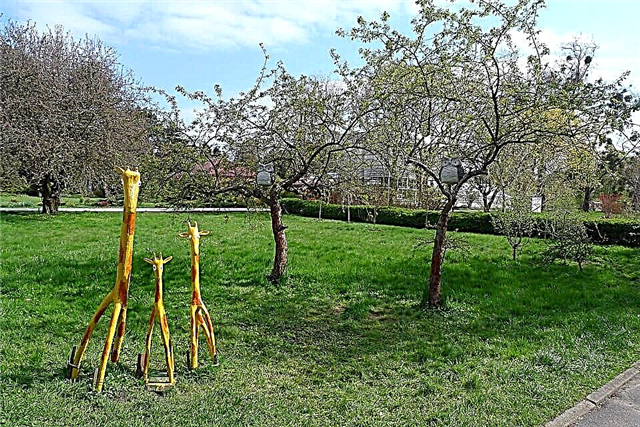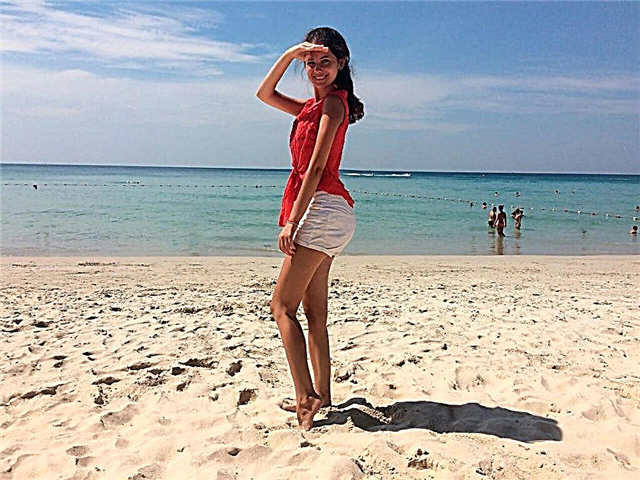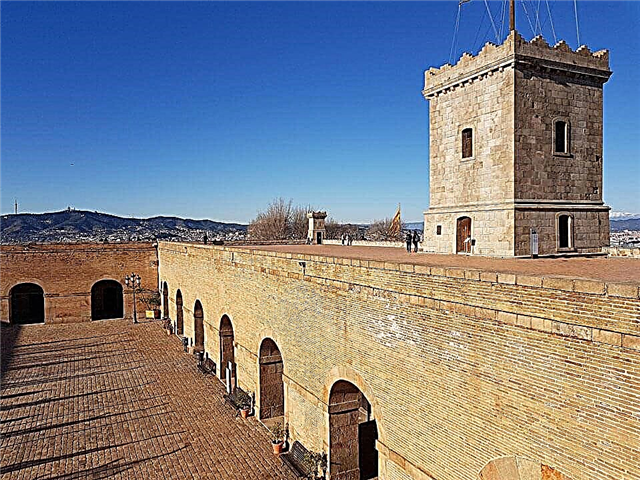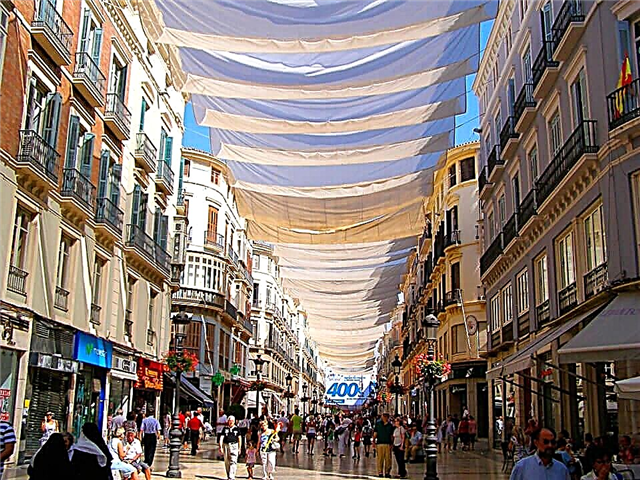The port city of Malaga has been in the midst of historical events since ancient times, because it stands at the crossroads of sea and land, is a link between the Mediterranean and the Atlantic, and it is also a bridge between the Islamist and Christian worlds. Attractions were replenished by each culture ruling in the Pyrenees in its own way. The Romans taught the Spaniards to arenas, the Phoenicians, showing how to build ships, discovered an abundance of warm waters and trade routes, and local artisans, builders and jewelers adopted the best, made someone else's their inalienable property.
Generations have accumulated, like a pearl, layers of mother-of-pearl, created the gloss of their hometown, filled neighborhoods with churches, planted alleys, built shopping centers and entertainment establishments. The most significant monuments of history and culture function as museums. Historical expositions are required at churches and cathedrals, tourists are kindly received there. In the open air - port, Roman theater, Moorish fortifications, bullfighting arena, botanical garden. Sometimes guests manage to visit 10-15 places per day. But most of the sights should be given at least an hour or two. Better - when to visit one monument go for the whole day. You need to start from the very, very. So, let's tell you about the main attractions of Malaga.
Cruise port

On the Costa del Sol, on the way to the Pillars of Gibraltar in the 8th century BC. NS. the Phoenicians built a deep-water pier and founded the city of Malaga. Today, tourist flows are attracted by the Andalusian Picasso Museum and the native places of the actor Antonio Banderas from all over the world. For travelers by sea, a cruise terminal was built in 2011. It is located opposite the commercial port. The total area of the harbor is 7000 m2.
The giant liners are an attraction in themselves. A pedestrian alley leads from the cruise terminal to the city. The old lighthouse La Farola will serve as a reference point during the walk.
After a 15-minute promenade, tourists get to the Paseo Parque palm park, but you can turn to the city beach. It is closest there - only 3 minutes walk. The Paseo de la Farola ends. Behind it is the "La Malagueta" arena, built for bullfights. But they stay on Parkovaya for a long time: they call shops, cafes, attractions. Buses leave the terminal regularly for the city. A ticket to the fortress costs 18 €, to the airport - 3 €, to the city center - 1.8 €. For a car tour "Port of Malaga" they ask for 5 €.
Fortress

One of the many alcazabs in Spain is the fortress of Malaga. It is the best preserved of all structures of this type (in terms of the degree of preservation it competes only with the Syrian one). Fortifications, called alcazabs, were built from the 8th century by the Barbary rulers as a chain of fort posts, united by extended walls and sentinel posts. Inside the fortress there are foundations of the garrison barracks, a palace among orange trees, and fountains. Outside there is a Roman amphitheater of the 1st century AD. NS.
The ascent to the citadel is carried out along a steep winding road. But the reward will be a passing visit to the landscaped gardens near the Governor's apartments, built in the XI-XIV centuries. The Cuartos de Granada apartments have been converted into an archaeological museum. In the period from April to October, the fortress is open from 9.00 to 20.00, in winter it closes at 18.00. Christmas holidays are celebrated by employees of all museums in Malaga, there is no entrance. The ticket price is 2.20 €. 3.20 € - if the visit includes Gibralfaro. On Sunday, admission is free from 2 pm.
Gibralfaro Fortress

Castillo de Gibralfaro is a Spanish name. Arabic comes from the confluence of "khibral" and "faro", which means "rock above the lighthouse." The port needed a defensive structure, and Emir Yusuf I ordered it to be built. Fortification tricks were applied: between the inner and outer walls there is a narrow passage to the adjacent fort - Malaga alcazaba. It's hard to guess about the "trap".
The Spanish king Ferdinand made the fortress conquered from Muslims in 1492 as his residence. The Gibralfaro exhibition of weapons and armor vividly illustrates the events of the Reconista - the war between the Crusaders and the Moors. Opens from 9:00 to 22:00 in summer, in winter it closes at six. Entrance is through the West Gate, cost 6 €.
Town hall

Behind the promenade park, between Avenue Cervantes, in front of the Gibralfaro Hill, is the Casa consistorial City Hall. For the provincial government - a building of extraordinary luxury. But the architect of Malaga in 1912 - 1917. was a native of Andalusia, the genius Guerrero Straciana. Strachana selflessly served his fellow countrymen, for which he was deservedly thanked: in 1928 - 1930 the architect was the head of the city government.
The Malaga House of Consistory, the Church of the Sacred Heart, the Prince of Asturias Hotel, private villas designed by the great Andalusian create the unique look of today's Malaga: the Moorish style is organically combined with the neo-colonial, baroque and classics. The City Hall is decorated with sculptures of sailors, fishermen, merchants - the plots are far from being palatial. The tradition “for the people” has been preserved: anyone can enter the Casa consistorial, free of charge (during office hours - from 9 am to 6 pm). The interior decoration of the halls, corridors and meeting rooms is striking in luxury. The stands displayed plans for the nearest city events.
Plaza de Toros "La Malagueta"

Bullfighting as a legacy of Mithrianism has existed in Spain for 5 millennia. Defending the human right to be the supreme being, the bullfighter enters into battle with formidable force. Malaga raised her hero. A friend of Ernest Hemingway and the hero of the novel "A Dangerous Summer" - matador Antonio Ardonez with thousands of fearless victories over the bull was honored to have the Museum of the Glory of Ardonez in the gallery of the Malaga bullfighting arena. The octagonal 52-meter arena was built according to the project of Joaquin Rukoba in the Moorish style especially for the burning national fun. Has the first category.
Bullfighting tickets are only distributed via the Internet (in order to counter speculation). Before starting, sell the rest. Price - from 10 to 200 euros. The most expensive ones are for the stands in the shade. The battles begin at 13 and 17 o'clock. Bullfighters are required on Holy Week. In April, May, August and September, a bullfight is held every Sunday. 1.8 € is a ticket to the Bullfighting Museum (except Saturday and Sunday, it is open daily from 10:00 to 13:00).
Automobile museum

Spanish billionaire Joao Magalhaes put his car collection on display in 2010. 100 rare models - from strollers to exclusive gilded in rhinestones - in total, the collection is worth 25 million euros. "Black Widow" of the king, released in a single copy, racing, on water as fuel - here each car is unique in its own way.
Actor cars, little ones, luxuriously tuned for noble people - they are not just vehicles. The miracle technique is set off by another, no less spectacular exposition: designer women's dresses and accessories. Theater of a beautiful life! Couples willingly visit it. The auto museum regularly hosts displays of women's clothing. Open from 10 am to 7 pm, except Mondays. The cost of the review is 8.5 €. Taking pictures is allowed.
Museum of glass and crystals

The villa in the Roman XVIII style, adapted for the Vidrio y Cristal Museum, is commendable for its careful and authentic restoration. The visitor is under the impression that he is visiting a Spanish nobleman. The name is conditional: furniture, carpets, portraits, bronze, tapestries are presented - all types of decorative and applied art, not only glass.
The owner (a private museum) is proud of the stained-glass windows of the Pre-Raphaelite masters, exhibited with illumination and in exquisite frames. Presented are modernist relief casting, Venetian colored and sulphide glass, Chinese and Meissen porcelain. The cost of the visit is 5 €.Open from 11 am to 7 pm every day except Mondays.
Center for Contemporary Art

There are 4 hundred paintings and installations by contemporary artists on the 2,400 m2 of the exposition. The homeland of Picasso and Dali does not risk missing out on another genius, so the Museum holds thematic, author's exhibitions and art seminars around all the materialized messages of the creative personalities of the Spanish lands and adjacent ones, regardless of the controversial style and direction.
In the halls of the former tobacco factory, refurbished with the latest gallery art, works by Louise Bourgeois, Jake and Dinos Chapman, Gerhard Richter, Paul McCarthy, Anish Kapoor, Raymond Pettibon, Ron Mueck, Yoshitomo Nara are exhibited. Children in the museum like interactive objects more. The entrance costs 7 €. Open daily, except Tuesday, from 10 am to 8 pm. On Sundays from 16:00 they are admitted free of charge.
Center Pompidou

El Cubo glass doors were inaugurated on 28 March 2015. The cost of the new Malaga gallery, designed to display the masterpieces of the Paris Center for Contemporary Art. Georges Pompidou cost the city's treasury and sponsors € 5 million. 6000 m² of exhibition halls and utility rooms could be lost between the port and the embankment, because the center also consists of 2 underground floors. But, thanks to the multicolored faces of the Cube, it can be seen from afar.
The painting hall of the 20th century accommodates canvases by Picasso, Chagall, Kandinsky, Magritte, Calo, Miro, Bacon, Ernst, Kooning, De Chirico - a total of 80 masterpieces of postmodern classics are leased until 2020. Opening hours: daily from 9.30 to 20.00, from June 15 to September 15 - from 11.00 to 22.00. The cost of visiting the permanent exhibition is 7 €, the temporary and permanent exhibition with a single ticket is 9 €. Free admission on Sundays after 16.00.
Cathedral

The construction of the Cathedral of the Incarnation on the site of the destroyed mosque began in 1524 and was completed 254 years later. 84 m - the height of the tower, the dome soared 40 m. One of the tallest structures in Andalusia is decorated in the choir with 42 figures of Catholic saints made by woodcarvers Pedro de Mena, Ortizo de Vargas and Giuseppe Alfaro.
A museum of religious objects has been created at the cathedral, some of them are 500 years old. Sculptures of the 17th century, salaries, vessels, and clothes of clergymen side by side with paintings by Luis Morales and Joseph de Ribera. In the second hall of the museum, the excursion is led by Bishop Santos Oliver. He talks about the history of the jewelery of the episcopate. Open for visits from Monday to Friday from 10.00 to 18.00, on Saturday from 10.00 to 17.00. The cost of the tour is 7 €.
Roman theater

The construction of the house of culture stopped in 1951: they stumbled upon ancient Roman stone blocks at the foot of the walls of the Alcazaba. These were seen in the walls of all the local Moorish fortresses. As a result of excavations, the Roman amphitheater of the time of Emperor Augustus appeared in its original form. Only the wooden structures have not survived.
The shape is special: not circular, but elongated, oval. 32 m - its width. The 13 seating tiers are still full: since 2011, concerts and shows have been shown in the arena. The acoustics of the arena are excellent. The entrance for the review is free. The tour car picks up everyone from Terminal 1. Sightseeing tour of the city for 18 € includes a stop at the Roman Theater.
Merced Square

The great Picasso lived in one of the houses adjacent to the square. There is a monument to the artist and a museum. However, the main dominant of the space is the obelisk to another son of Andalusia - General Torrijos. The page of the royal court, José Maria de Torrijos, rose to the highest officer ranks, fought with Napoleonic France, but soon became a staunch republican himself.
In 1831, Torrijos and 48 of his like-minded people landed on the coast, hoping to start a liberation movement, but the conspirators were captured and executed on the coast of their hometown. You can bow to Picasso's talent any day of the week at his house on Granada Street. Having passed one block towards the sea, fans of the founder of Cubism find themselves in the museum of the idol. Open all the time, except Monday, entrance - from 9 to 19 hours. The ticket costs 11 €.
Street Marques de Larios

Marques de Larios stretches from the embankment to the Constitution Square, and ends at the 16th century square fountain. For a long time the avenue was called Main. For the restructuring of the Main, they voted on May 1, 1880. In order to finance the construction, the municipal authorities issued shares, most of which were acquired by the Marquez de Larios family. Highway architects: Jose Maria Sancha, Manuel Rivera and Eduardo Viana Strahan-Cardenas (the latter is the author of the central part of Chicago). The designers worked under the guidance of the main shareholder of the project. The total number of involved specialists is 1200.
Military bombing caused significant damage to the main street. But by 2002, it was restored and handed over to residents, the avenue became pedestrian. Boutiques, cafes and restaurants are beckoning on both sides of the Marques de Larios. It is impossible not to stay here, because you want to listen to street musicians, take a selfie with living sculptures. Thanks to the amazing illumination of the Gothic nave, Rue de Marquesa is full until the morning. As a token of gratitude, the townspeople erected a monument to their patron in the park of sculptures - he is the first among the celebrities of Andalusia.
Atarazanas Central Market

The market was built in 1879 according to the project of Joaquin Rukoba on the site of the Atarasan shipyard in Nasrid. The pavilion with a glass roof is decorated with a colorful stained glass window over the entrance arch. Spacious galleries are delimited by cast iron columns in the Moorish style. There is always a fish day and a week of jamon on the market, and besides, there are fruits in the middle of winter at the price of summer.
You can stumble upon a very exotic food, but the sellers will willingly explain the cooking method. The market is open from Monday to Saturday in the morning: from 10:00 to 14:00, sellers rest on Sunday.
Botanical Garden "La Concepcion"

Seven kilometers separate the region, the city and the Botanical Garden, created 150 years ago by the spouses Loring. The French gardener Chamus, who created the park in the English style, could not resist the temptation to grow countless tropical plants. The aborigines of the tropics have successfully taken root. The garden is full of palms, cacti, lemon trees, millennial olives, cypresses - countless varieties and forms among ponds, streams and fountains.
But the Spaniards value Mediterranean pines most of all: it is important in the heat. Viewpoints "Miradors" provide an opportunity to view the port and the city from afar. The garden is municipal. Entrance - 4.2 euros. Free on Sundays after 15:00. Open in summer (1.04 - 30.09) from 9.30 to 20.30. In winter, the park closes an hour earlier. Monday is a day off.
In Malaga, GuruTurizma recommends the following hotels:











